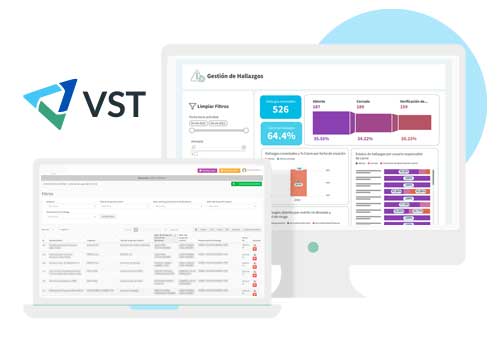
Educating for Sustainability: Why Environmental Awareness Matters
In today’s world, sustainability awareness has become a crucial aspect

To meet these demands, more and more companies are turning to Health, Safety, and Environment (EHS) software to streamline their processes and enhance their operations. However, the success of EHS software implementation depends on various factors, including selecting the right software, preparing for implementation, and effectively managing the process.
Implementing EHS software can have a significant impact on an organisation’s operations and bottom line. The software can help companies comply with legal and regulatory requirements, promote safety, and reduce risks associated with non-compliance.
EHS software plays a vital role in ensuring workplace safety and compliance. It provides a centralised platform to manage risks, incidents, inspections, and audits. The software can also help identify potential hazards, track corrective actions, and monitor compliance with regulatory requirements.
For example, let’s say a company operates in the construction industry. The use of EHS software can help identify potential hazards such as falls from heights, electrical hazards, and exposure to hazardous substances. By tracking corrective actions, the company can ensure that all hazards are addressed promptly, reducing the risk of accidents and injuries.
Additionally, EHS software can help companies comply with regulatory requirements such as OSHA regulations in the United States. The software can provide a centralised platform to manage training records, safety data sheets, and incident reports, ensuring that the company is always up-to-date with regulatory requirements.
The benefits of implementing EHS software are manifold. It can improve productivity, reduce administrative burdens, and enhance communication and collaboration. Furthermore, by streamlining processes and centralising data, EHS software can provide organisations with valuable insights into their operations and help them make data-driven decisions.
For instance, implementing EHS software can reduce the administrative burden associated with managing safety data sheets. The software can automatically update and manage the data sheets, freeing up time for employees to focus on other tasks. This can result in increased productivity and efficiency.
Moreover, EHS software can enhance communication and collaboration across different departments within an organisation. For example, the software can provide real-time updates on incidents and corrective actions, enabling different departments to work together to address safety issues.
In conclusion, implementing EHS software is crucial for organisations looking to improve workplace safety, comply with regulatory requirements, and reduce risks associated with non-compliance. The software can provide a centralised platform to manage risks, incidents, inspections, and audits, as well as improve productivity, reduce administrative burdens, and enhance communication and collaboration.
Selecting the right EHS software is crucial to successful implementation. Before investing in software, organisations must assess their needs, goals, and budget. Furthermore, evaluating software features, capabilities, and scalability is essential to make an informed decision.
Understanding your organisation’s unique needs and goals is the first step in identifying the right EHS software. Consider factors such as the size of the organisation, the number of employees, and the industry you operate in. Furthermore, identify the key challenges your organisation faces and your goals for implementing the software, such as reducing incident rates, improving compliance, or enhancing communication.
For example, if you operate in the construction industry, you may need EHS software that can manage site inspections, track hazards and incidents, and monitor compliance with health and safety regulations. On the other hand, if you operate in the healthcare industry, you may need software that can manage patient safety, track incidents, and monitor compliance with healthcare regulations.
Assessing your organisation’s needs and goals will help you identify the features and capabilities you require in EHS software.
When evaluating EHS software, consider whether the software offers the features necessary to meet your organisation’s needs. These may include features such as incident reporting, risk management, inspections, and audits. Furthermore, consider the software’s ease of use, reporting capabilities, and integration with other systems.
For example, if you need to manage incidents and accidents, you may require software that can generate incident reports, track corrective actions, and analyse incident data. Alternatively, if you need to manage risk, you may require software that can assess hazards, evaluate risks, and implement controls.
Furthermore, if you need to integrate the EHS software with other systems, such as HR or financial systems, you may require software that offers integration capabilities.
Before investing in EHS software, consider how it will grow with your organisation. Scalability is essential, and the software must be able to adapt to changes in your organisation’s size and needs. Furthermore, consider whether the software can be customised to meet your specific requirements.
For example, if you plan to expand your operations or increase the number of employees, you will need software that can handle the increased workload and adapt to changes in your organisation’s structure. Additionally, if you have unique requirements, such as specific reporting needs or workflows, you may require software that can be customised to meet those requirements.
Overall, selecting the right EHS software requires careful consideration of your organisation’s needs, goals, and budget. By evaluating software features, capabilities, and scalability, you can make an informed decision and ensure successful implementation.
Effective preparation is critical to the success of EHS software implementation. Stakeholder buy-in, project planning, and budgeting are essential to ensure a smooth transition to the new system.
Before implementing EHS software, it is essential to secure buy-in from stakeholders across the organisation. This includes senior management, department managers, and employees who will use the system. Communicate the benefits of the software and address any concerns stakeholders may have.
It is important to involve stakeholders in the decision-making process and to keep them informed throughout the implementation process. This will help to build trust and ensure that everyone is on the same page. Additionally, involving stakeholders in the implementation process can help to identify potential issues early on and address them before they become major problems.
Assigning roles and responsibilities to a project team is essential to ensure effective implementation. The team should include representatives from across the organisation, and each member should have a clear understanding of their role and responsibilities.
It is important to select team members who have the necessary skills and expertise to contribute to the project. This may include individuals from IT, EHS, finance, and other departments. Additionally, it is important to ensure that team members have the time and resources necessary to complete their assigned tasks.
Developing a realistic timeline and budget is essential for effective EHS software implementation. Consider factors such as data migration, system integration, software customisations, training, and support. Furthermore, establish clear milestones and metrics to measure the success of the implementation.
It is important to allocate sufficient time and resources to each stage of the implementation process. Rushing the implementation process can lead to errors and oversights, which can have serious consequences for the organisation. Additionally, it is important to have contingency plans in place in case of unexpected delays or issues.
Finally, it is important to regularly review the implementation process and make adjustments as necessary. This will help to ensure that the implementation stays on track and that any issues are addressed in a timely manner.
Once the organisation has selected the right software and completed the necessary preparation, the implementation process can begin. A step-by-step approach can help ensure a smooth transition to the new system.
The first step in the implementation process is to migrate data from existing systems to the new software. This involves mapping data fields and ensuring the accuracy of the data. Additionally, it is important to identify any potential issues that may arise during the migration process and develop a plan to mitigate these risks.
System integration may also be required to ensure that the new system can communicate with other systems in use. This can be a complex process, as different systems may use different data formats and protocols. However, by ensuring that all systems are properly integrated, the organisation can streamline its processes and improve its overall efficiency.
The next step is to configure the software settings to meet the organisation’s requirements. This includes creating user accounts, setting up workflows, and configuring custom fields. By tailoring the software to the specific needs of the organisation, the software can be optimised to improve productivity and reduce errors.
Furthermore, any necessary customisations should be developed to meet the unique needs of the organisation. This can include developing custom reports, creating custom fields, or even developing custom modules. By developing these customisations, the organisation can ensure that the software is tailored to its specific needs.
Before the new system can go live, it must undergo thorough testing and quality assurance. This includes testing all workflows, customisations, and integrations to ensure that they are functioning as intended. Additionally, conducting user acceptance testing is essential to ensure that the software meets the needs of the organisation.
During the testing phase, it is important to identify and address any issues that arise. This can include bugs, performance issues, or even user interface issues. By addressing these issues before the software goes live, the organisation can ensure that the transition to the new system is as smooth as possible.
Overall, implementing EHS software can be a complex process. However, by following a step-by-step approach and addressing potential issues as they arise, the organisation can ensure that the transition to the new system is successful and that the software is optimised to meet its specific needs.
In conclusion, implementing effective EHS software is crucial to ensuring workplace safety and regulatory compliance.
By selecting the right software, preparing thoroughly and managing the implementation process, organizations can enjoy the benefits of improved operations, reduced risk and improved decision-making. Adopting a phased approach will facilitate a smooth transition to the new system, enabling the organization to achieve its goals.
At Vela Sustainability Technologies, we are a world-class technology provider offering solutions to drive sustainability management in your company.
By incorporating Vela’s technology, organizations can automate their processes that support operational health and safety, clinical health and wellness, environmental management, governance and compliance management, social investment and impact, and more.
Our modular approach enables clients to focus on what delivers the greatest impact and value, allowing you to prioritize what’s important to you and your business.

In today’s world, sustainability awareness has become a crucial aspect

The Significance of April 28th: World Day for Safety and
